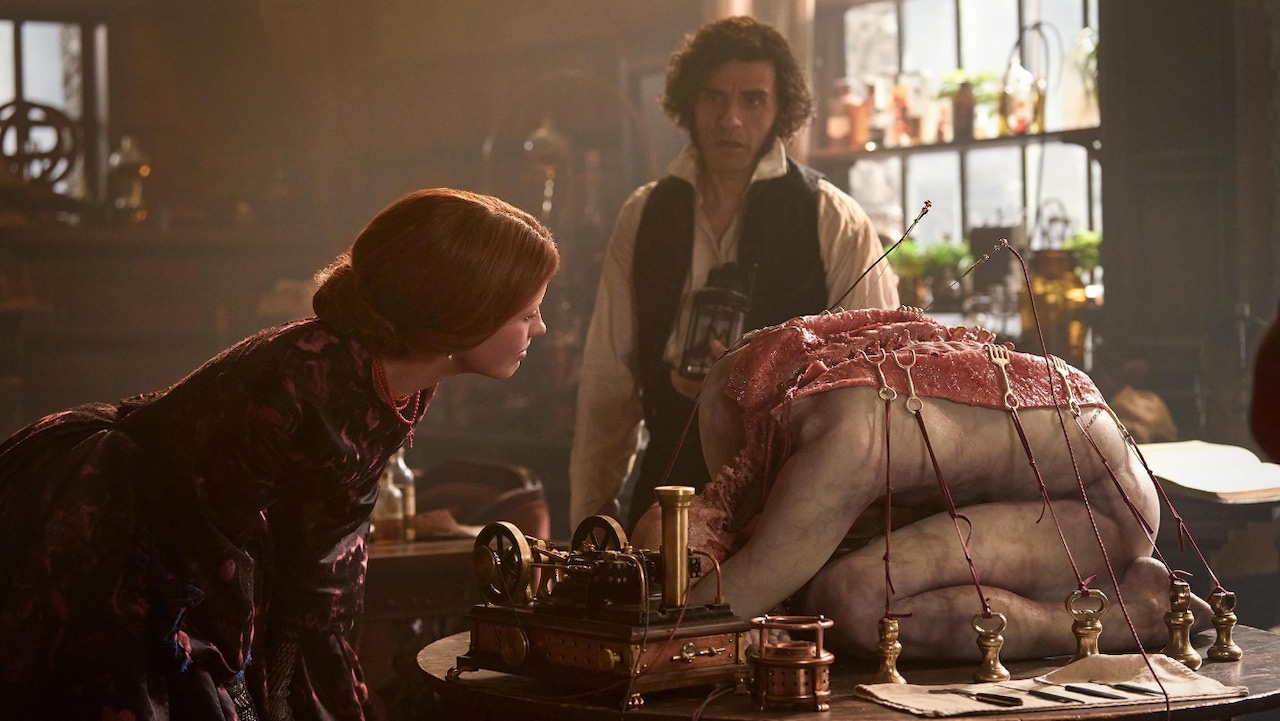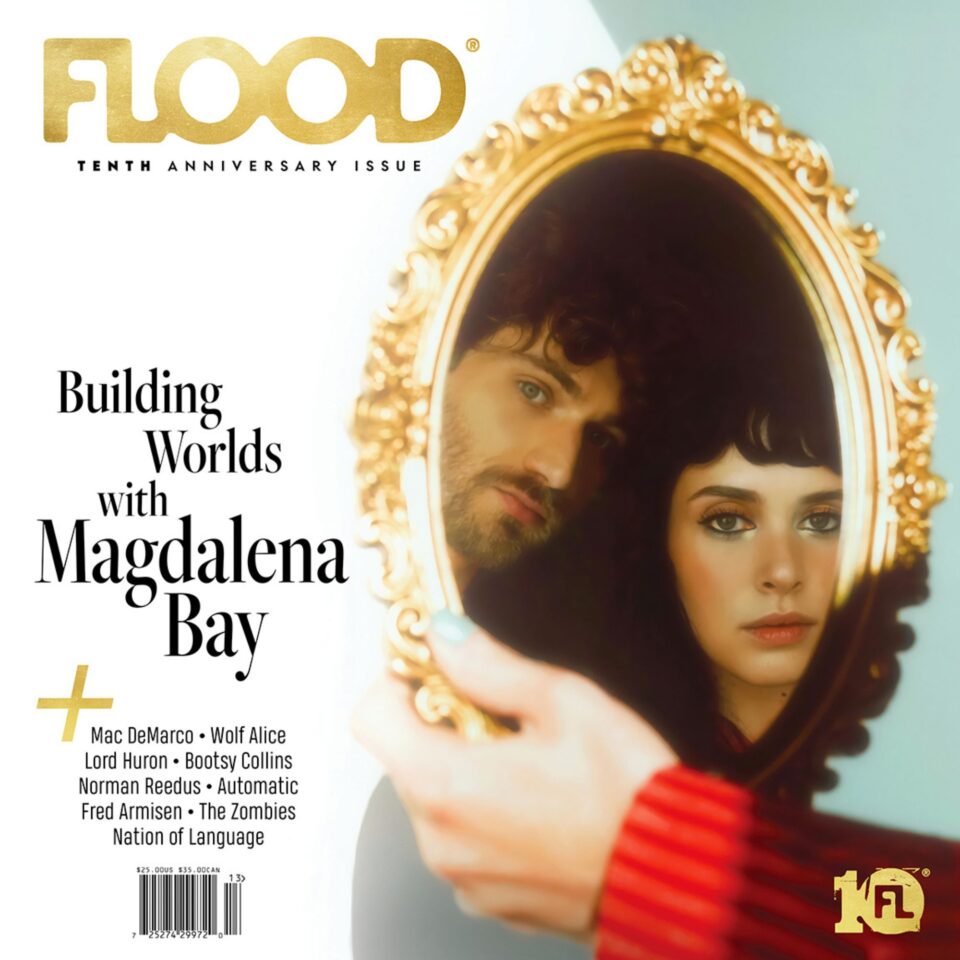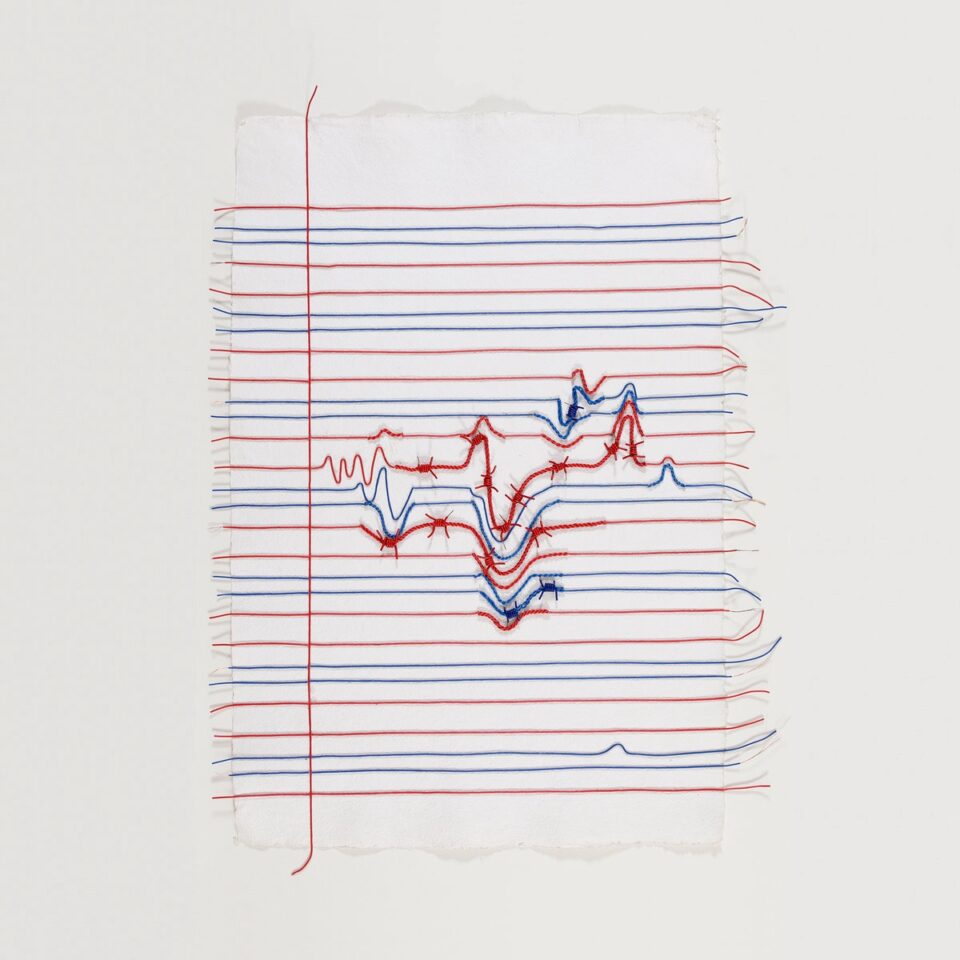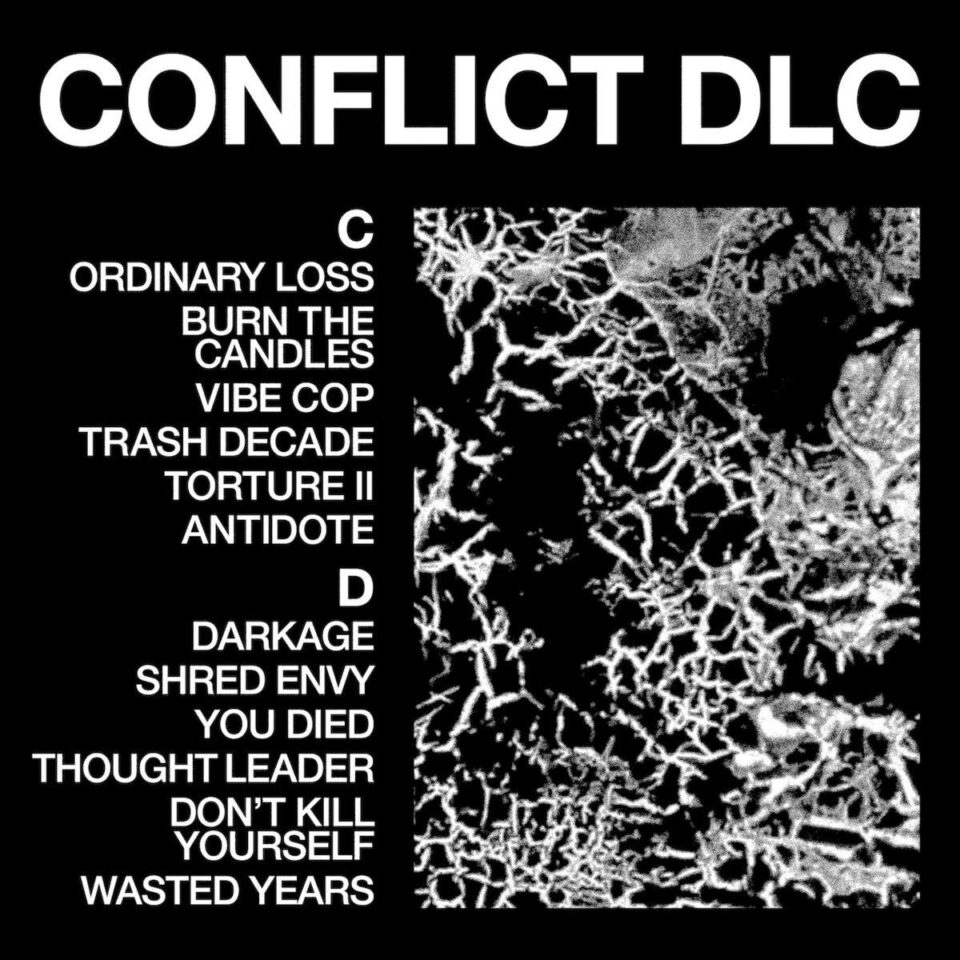In 1816, a pregnant 18-year-old wrote a ghost story that went on to inspire one of the most foundational artistic genres of the modernist era, science fiction, and cemented another, horror. Mary Shelley’s canonical Frankenstein; or, The Modern Prometheus would go on to establish one of our culture’s most recognizable archetypes and a staple of spooky-season iconography: Frankenstein’s monster (invariably called “Frankenstein,” much to the dismay of every English teacher). It’s a dark, allegory-laden piece of autobiographical fiction about creation, caregiving, and the ethical limitations of scientific pursuit. Its central thesis is something along the lines of, “monsters are made, not birthed.”
Frankenstein is an anatomical theatre of a text that asks its adaptive storytellers to also lay themselves bare before it. Many have tried; few have succeeded. No one understands this (or Shelley, for that matter, the woman who kept her husband’s calcified heart at her desk and is strongly suspected to have lost her virginity atop her mother’s grave) better than Guillermo del Toro. In a recent carpet interview with Vanity Fair during the NYC premiere of his new Frankenstein adaptation, the writer-director said, “I resonated with Mary Shelley when I was 11, and she was a protestant girl in England. I was a Catholic boy in Mexico, but our souls seem to be made of similar crystal.” His obsession with and reverence for this author, these characters, the book, and the sensibilities of the Romantic intellectual movement more broadly are near-tangible in the film, which was released in select theaters earlier this month and will begin streaming on Netflix on November 7.
Del Toro has consistently given Shelley her flowers and has spoken at length about her impact on him at almost any given opportunity. During his acceptance speech in 2018 for Best Director for The Shape of Water at the BAFTA Film Awards, he noted, “She has remained a figure as important in my life as if she were family…when people tell me the movies and the stories I dream are impossible, I think of her.” In an interview with NPR’s Terry Gross discussing his iteration of the classic, del Toro said, “There’s Frankenstein in all my movies. All the way from Cronos to Pinocchio—every single movie. I hesitate to think of one that doesn’t have elements of it.” This is a film made not only by a fan, but by someone who the work has lived inside of for an entire lifetime.
The auteur, who’s created masterpieces in the realms of magical realism and dark fantasy with additional groundbreaking films like Pan's Labyrinth, Nightmare Alley, the first two Hellboy movies, and The Devil’s Backbone, has crafted one of his most visually and emotionally resonant pieces yet. Frankenstein is del Toro’s magnum opus and his love letter to Shelley, who fostered his taste for the macabre and the beauty its tragedy makes so apparent. He likes reimagining a classic movie monster, it would seem, with homages to the greats like the Creature from the Black Lagoon (The Shape of Water), Godzilla (Pacific Rim), vampires (Blade II), and now Frankenstein’s monster.
Audiences will swoon at the scope and scale of this thing, its rich colors in dim lighting and its sublime, opulent costumes—not to mention Oscar Isaac’s bare ass for a few seconds. Speaking of Isaac, he’s brilliant as the egotistical scientist Victor Frankenstein with a theatrical flair akin to an unadulterated ’70s rock star. The newly minted scream queen and multiple-role specialist Mia Goth plays both Elizabeth Lavenza, Victor’s forbidden love and his brother’s fiancée, and the short-lived Claire Frankenstein, Victor’s mother. This duality, alongside Victor’s constant and enigmatic milk-drinking, leads me to believe the character is either working through a deep-seated Freudian fixation, is in a symbolic state of arrested development (illustrated in his selfish, futile desire to play god), or is a nod to Howard Hughes.
Meanwhile, Jacob Elordi captures the Creature’s essence and physicality with incredible verisimilitude, grounding his performance in the surreal environment and avoiding the distracting, overwrought breathing that plagued Bill Skarsgård’s portrayal of Count Orlok in 2024’s Nosferatu. While his stature possibly made him a shoo-in for the role, his performance is genuinely moving.
A special round of applause is in order for costume designer Kate Hawley, with whom del Toro worked previously on Pacific Rim and Crimson Peak (as well as his famously unrealized adaptation of The Hobbit). Speaking to W Magazine about Frankenstein, Hawley said, “I’m always trying to get inside the director’s head and interpret what they’re seeing, but with Guillermo, it’s a little bit easier because he’s got such a rich, vast knowledge of art, history, and literature. He’s such an educated man in that way. So it’s very rewarding. It’s like catnip.”
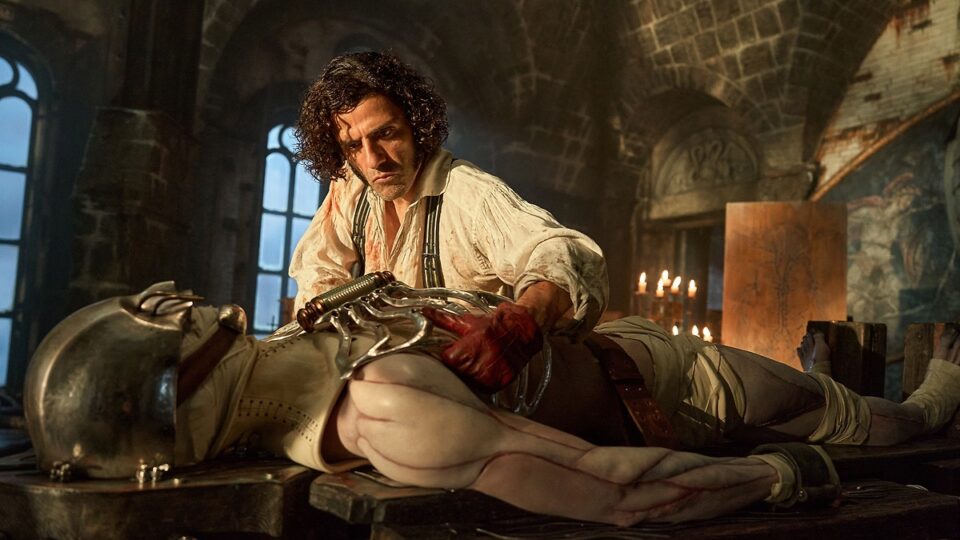
Del Toro writes and directs like a poet. He’s thoughtful, thorough, and deliberate without seeming too contrived—masterful restraint, given his undeniable excitement for the project. Everything is connected, and everything is a part of it. Pay attention to color, specifically how it manifests in lighting and costume, and how certain characters are identified by distinct hues. For Elizabeth, for example, jewel tones pop alongside archival and custom Tiffany & Co. jewelry pieces. Her wedding dress is a moment unto itself, with its ribbon bodice intended to dually mimic a skeletal, cage-like appearance and the bandages the Creature is initially wearing when “birthed.”
The first time we see Goth, she’s wearing a veil of stark red chiffon over a black-and-white chevron-patterned gown, clutching young Victor on a sweeping staircase, reluctantly welcoming her callous husband home. The shot is breathtaking, melodramatic, and markedly del Toro. Elizabeth functions as the monster’s protector—a luminous figure ultimately too good for this world. Unlike the original novel, she’s also Victor’s moral foil and antithesis. She’s granted much more agency in this iteration and effectively becomes a sort of stand-in for Shelley herself, as well as other women of the literary lineage like Emily Brontë and Christina Rossetti.
Touches of subtle and well-earned artistic liberties are evident in a few other notable plot points and characters, including the addition of Henrich Harlander (played by Christoph Waltz), a firearms dealer bankrolling Victor’s unholy experiment. It’s my firmly held belief that Waltz can shine in any role that requires a German accent, with a puckish, eccentric energy reminiscent of Willem Dafoe. Harlander’s presence roots the narrative in the Crimean War and enables one of the film’s most magnificent set pieces: a crumbling, abandoned water tower transformed into a laboratory of epic proportions.
Another creative license of del Toro’s is Victor’s oppressive father, Leopold Frankenstein, played with terrifying precision by Charles Dance. This dynamic appears to be where del Toro processes his fraught relationship with his own father, who recently passed away. Their connection was deeply complex, marked by his father’s ghostlike presence during del Toro’s childhood and later by the PTSD his father suffered after being kidnapped and held for ransom—a debt del Toro paid with help from friends like James Cameron, but an event his father refused to discuss.
Granted, I entered this film as a lover of the Romantic poets, with a degree in English Lit, and with substantial daddy issues of my own, so perhaps my predisposition explains the film’s profound impact. Like many of us, I’ve felt monstrous, isolated, and misunderstood, but it’s precisely this shared pain that draws del Toro to it and to the catharsis it offers. A forewarning that it’s a bit weepy, yet the film is also fun and whimsical. It, of course, wouldn’t be del Toro without a few moments of profound violence, too, sometimes involving the face. There are few directors in whose hands I would trust this source material. I’d argue there are even fewer male directors who have the capacity to engage with it substantively. It’s a tale that’s been retold over and over again for good reason. Del Toro’s adaptation is a gorgeously gothic, meticulous monstrosity that understands its foundational text and its singular author perhaps better than any before it.

